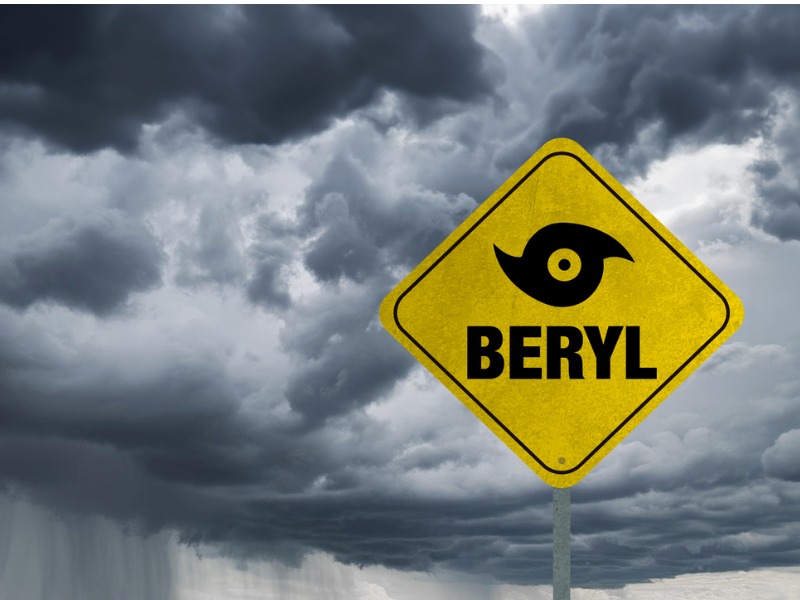Canada’s insurance industry braces for Beryl

Claims adjusters are on standby as remnants of Hurricane Beryl bring heavy rainfall and flood conditions through parts of Ontario and Quebec.
Beryl is expected to hit Southern Ontario with 20 mm to 40 mm of rainfall per hour, beginning Tuesday or Wednesday night and continuing into Thursday. Localized rainfall totals could exceed 50 mm.
The tropical storm will hit Southern Quebec late in the day Wednesday, bringing moderate winds and rainfall amounts between 30 mm and 60 mm. Eastern townships of Quebec can expect between 40 mm and 80 mm of rain.
Environment Canada issued a special weather statement warning Ontarians of the hazards.
“Although confidence in the exact track of the weather system is low, these types of systems in the past have given very high rainfall rates in torrential downpours. Rainfall warnings may be issued as confidence in the track of the system increases.”
In Quebec, Environment Canada warns of heavy rains that could cause flash flooding and ponding on roads. And, especially in southern parts of the Eastern Townships, bridges, culverts, buildings and people can be swept away by rapidly rising rivers and streams
“People near rivers and streams should watch for rapidly rising water levels and be prepared to move to a safer location.”
The insurance industry is on standby as Beryl tracks through Southern and Midwestern U.S. and upward.
“We are expecting considerable rainfall along various locations in the path of this storm and expect some losses resulting from this,” CRU Group’s David Repinski told Canadian Underwriter in an email statement. “We have adjusters on standby across the projected path in both Canada and the U.S. to respond accordingly.”
The adjusting firm says it’s already responding to losses where the storm made landfall in Texas on Monday.
Though it remains too early to tally insured loss estimates, “based on the landfall location and the inland track, it would correlate with wind-related insured losses for the private insurance market minimally running into the hundreds of millions (USD),” said recent Gallagher Re commentary on the storm’s landfall in Texas.
Hurricane Beryl has already broken eight records since it first tracked across the Caribbean, including the earliest Category 5 hurricane on record, and the strongest hurricane in June, according to Moody’s reporting.
AccuWeather released a preliminary estimate of the total damage and economic loss from Hurricane Beryl in the United States Tuesday, predicting the storm would cost $28 million to $32 billion in economic damage, mostly in the Texas area. In contrast, the weather network said, Hurricane Harvey, which hit a similar area in Texas, caused $230 billion in total damage and economic loss in 2017.
As the storm tracks north, heavy rainfall and flash floods remain a concern for the Great Lakes region, according to the National Hurricane Center.
Simultaneously, parts of southern Ontario and the GTA are under an ongoing heat warning, with daytime highs expected to be near 31 degrees Celsius, and humidex values of 35 to 38.
Feature image by iStock.com/Rodrigo







